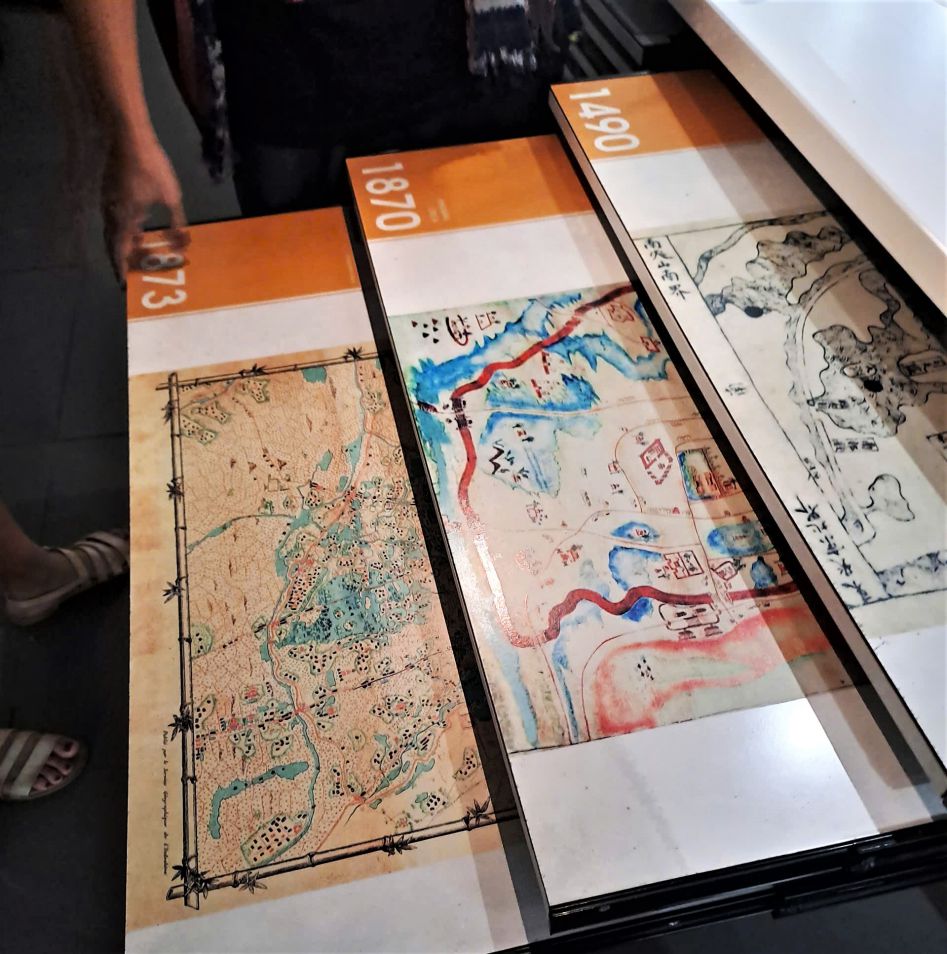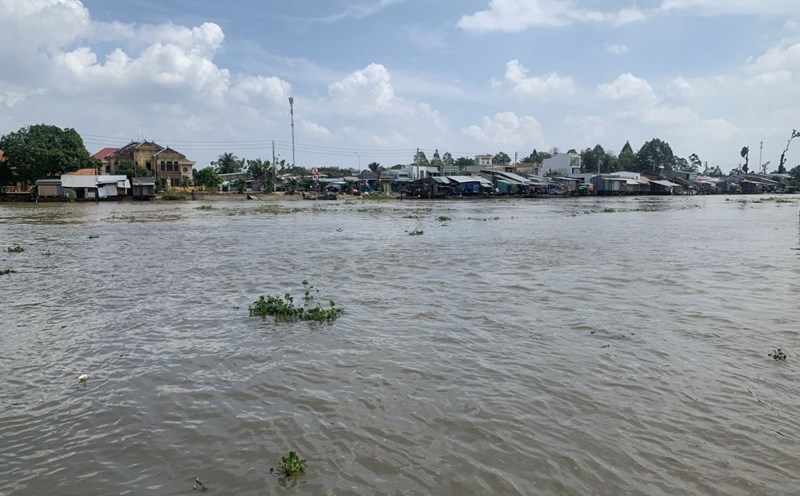"The soul of the city's river" (the name of the walking trip combined with storytelling) is the result of research and continuous experimentation by architect Nguyen Vu Hai. spending nearly 10 years developing the program, he still accepted that "this is a long self-identity of Hai, a space to discuss how we remember and are attached to Hanoi", rather than a simple travel experience.
Searching for river traces
Scheduled for a weekend in June, Hanoi suddenly had a cool time thanks to the rain last night. At 8am, Mr. Hai made an appointment with us at No. 1 Gao Market, adjacent to Tran Nhat Duat Street. Meeting a group of about 7 guests, he introduced the basic route and gave each person an express episode of the document before giving the story.
We departed from Cho Gao street, through Dao Duy Tu - Hang Buom - Cha Ca - Hang Luoc - Hang Dau, then to Bot Hang Dau - Phan Dinh Phung. The walk ended at Cua Bac Church at around 4pm.
The trip was divided into three parts, starting from Cho Gao street (formerly the gate of To Lich river), we were instructed on maps and the development of Thang Long urban area. The second part continues with discussions and learnings about the river mouth area and life inside the water network. At the end of the group, the whole group listened to the research and concerns of the narrator about a fighting society in a space transitioning to new standards.
The first stop on the pedestrian bridge across Tran Nhat Duat street, one side is the old quarter, the other side is the Red River dike, from here the narrator evokes the idea of a bustling river mouth filled with boats, which is also the origin of the ancient urban model.
From basic knowledge of urban areas, combined with synthesized documents and ancient maps from the Ly and Tran dynasties when the newly formed Thang Long Imperial Citadel was built to the present day, Mr. Hai guided us to find traces of the buried river mouth area. Moving through Dao Duy Tu - Hang Buom - Cha Ca - Hang Luoc streets, explain the names of the streets revealed according to each story and discussion.
After lunch, stepping out of the small old town crowded with tourists, we escaped from the legendary stories surrounding the river To Lich. When arriving at Bot Hang Dau, Hang Dau water tower and traveling along Phan Dinh Phung street, Mr. Hai took us to the French colonial period, when the river was buried and underground sewers and Long Bien bridge appeared, signs of Western civilization formed on the land of dragons flying.

Other perspectives of Hanoi's Old Quarter
The further you travel, the more you will see the life of the To Lich River (the river that originated the name of Hanoi - the city in the river) depicted more clearly. The walking tour not only takes us to find rivers but also opens up stories of people and urban areas because "rivers are both the backbone and the blood vessel of urban areas".
Not only walking through the streets, admiring the modern life along with stories, hypotheticals and evidence of the past of To Lich River, listeners can also visit and explore the history of Bach Ma Temple, Quang Dong quan Association, Hanoi Old Quarter Cultural Exchange Center... In each street, each stop we find features that even though they have passed through hundreds of times and there are people who have lived in Hanoi for decades, they still do not pay attention to.
"The soul of the city's river" is led by a Hanoian lover, using the excuse of looking for the history of a river and telling the story of an entire city. The trip is truly like a journey through space and time right in the heart of Hanoi's Old Quarter. Through Mr. Hai's lens, the old town seems to take listeners to another direction through layers of history, where the To Lich River still "lives" and is present through every corner of the street, every house.
The difference of Street Heart March for both the narrator and the listener is that it is not like before, the discussion linking the two sides brings new stories. At the end of the walking tour, we participated in the game "Memory Map". Mr. Hai asked each person very personal questions such as "What childhood memories do you have of Phan Dinh Phung Street?", "What good/bad impressions do you have of Hoang Dieu Street?".
All answers were re-written by Mr. Hai and marked on a current map, stacked on a layer of maps from previous periods. Thanks to those memories, meticulous records and hand-painted maps, the strings connecting streets, rivers and people are no longer located in historical sites but much closer to the present.











